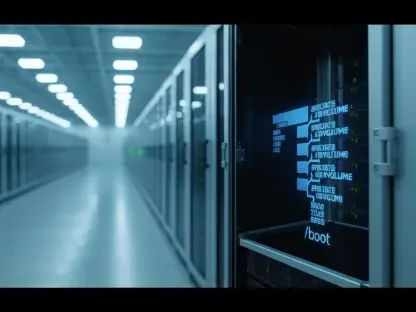Today, we’re speaking with Vijay Raina, a specialist in enterprise SaaS technology and software design architecture. Vijay’s extensive experience in SaaS tools and thought-leadership provides valuable insights into balancing efficiency and innovation in the current business climate.
Can you explain the importance of balancing both efficiency and innovation in today’s business environment?
Balancing efficiency and innovation is crucial because these two elements drive a company’s sustainability and growth. In an environment of rising operational costs and tighter budgets, efficiency ensures that resources are used effectively, maintaining the business’s financial health. Meanwhile, innovation provides the competitive edge needed to seize new opportunities and drive revenue growth. The tension between cutting costs and fostering growth has become more pronounced as companies navigate economic uncertainty and technological advances.
Why has the tension between cutting costs and driving growth become more pronounced recently?
This tension is more pronounced due to economic pressures and the accelerated pace of technological change. Companies are under pressure to reduce costs because of increasing operational expenses and tighter budgets, which emphasize the need for efficiency. At the same time, to remain competitive and capitalize on new market opportunities, there’s a strong push to invest in innovative technologies and solutions that drive growth.
What are the key differences between the optimizer and innovator mindsets?
The optimizer mindset focuses on cost reduction, risk management, and streamlining operations to ensure the business remains profitable and efficient. In contrast, the innovator mindset is oriented towards transformation, investing in new technologies, and finding growth opportunities. While the optimizer is about maintaining stability in the short term, the innovator is forward-looking, aiming to secure future success through groundbreaking solutions.
How does rising operational costs and tighter IT budgets impact business strategies?
Rising costs and tighter budgets force businesses to reassess their spending priorities, often leading to a greater emphasis on efficiency and cost optimization. This can result in deferred investments in innovation unless companies find ways to balance these competing demands through strategic IT modernization and optimization practices.
What percentage of revenue do Australian organizations typically allocate to IT?
According to a study conducted in 2024, Australian organizations allocate about 5.08% of their revenue to IT. This modest allocation necessitates a strong focus on efficiency to manage resources effectively and ensures that IT investments are strategically aligned with business goals.
How does this allocation drive the need for efficiency?
Given the relatively low percentage of revenue allocated to IT, organizations must prioritize efficiency to maximize the impact of their IT spend. This means adopting cost-effective technologies and practices that allow them to do more with less, ensuring that they can maintain operations and drive innovation within constrained budgets.
What are some common strategies companies use to achieve immediate ROI through cost optimization?
Companies often turn to managed services, streamline IT operations, and leverage cloud platforms like Microsoft Azure to achieve immediate ROI. These strategies help reduce overhead, improve scalability, and align IT investments with current business needs. For instance, by shifting to cloud-based services, companies can avoid significant upfront capital expenditures and pay only for the resources they use.
Can you provide examples of how cloud platforms like Microsoft Azure assist in streamlining operations?
Cloud platforms such as Microsoft Azure enable companies to simplify their IT infrastructure, automate routine processes, and easily scale resources up or down based on demand. This leads to reduced operational complexity and costs, allowing organizations to focus on strategic initiatives rather than maintenance and administrative tasks.
Despite economic pressures, why is innovation still crucial for certain sectors like financial services, education, and healthcare?
Innovation remains vital in these sectors due to the rapid pace of change and the need to meet evolving customer and regulatory demands. For instance, in healthcare, new technologies can improve patient outcomes and operational efficiency. In education, digital tools can enhance learning experiences, while in financial services, innovation can lead to more secure and efficient financial transactions.
What role do emerging technologies like AI agents and data analytics play in driving growth?
Emerging technologies like AI agents and data analytics are instrumental in driving growth as they provide deeper insights, improve decision-making, and offer new capabilities that traditional systems may lack. AI can automate and optimize processes, while data analytics can uncover patterns and trends that inform strategic initiatives and open new revenue streams.
How do cloud-native applications contribute to innovation?
Cloud-native applications are designed to maximize the benefits of cloud environments, offering greater scalability, flexibility, and faster deployment of new features. They enable businesses to innovate rapidly, respond to market changes, and improve user experiences by leveraging the powerful capabilities of cloud infrastructure.
How can IT modernization bridge the gap between optimization and innovation?
IT modernization helps bridge the gap by enabling businesses to adopt new, scalable, and secure platforms that enhance both efficiency and transformative capabilities. Modern IT assets reduce operational costs and facilitate the deployment of innovative solutions, supporting long-term growth and streamlined operations.
What are the benefits of adopting scalable and secure IT platforms?
Adopting scalable and secure IT platforms allows companies to easily adjust their resources to meet changing demands, maintain robust security, and ensure compliance. These platforms support business agility and resilience, providing a foundation for both cost-effective operations and continuous innovation.
How can modern IT assets help reduce costs and drive long-term growth?
Modern IT assets streamline operations, reduce maintenance efforts, and enable the implementation of advanced technologies. They help lower overall costs by improving efficiency and facilitating smooth integration between new and existing systems. This positions businesses for continuous growth by making it easier to innovate and adapt to future needs.
How can businesses strategically align the optimizer and innovator mindsets?
Businesses can strategically align these mindsets by using efficiency gains to fund innovation projects. By reducing IT complexity and operational costs, companies can reallocate resources to transformative initiatives, creating a virtuous cycle where optimization supports innovation and vice versa.
How does reducing IT complexity free up resources for innovation?
Simplifying IT operations decreases the time and effort needed to maintain systems, freeing up resources — both financial and human — to focus on new developments and strategic projects. This shift allows businesses to allocate more attention to innovation without neglecting their efficiency goals.
Can you explain the concept of reinvesting cost savings into transformative projects?
Reinvesting cost savings into transformative projects involves using the savings from efficiency improvements to fund innovation initiatives. This approach ensures that gains from optimization directly contribute to growth and future-readiness, fostering a cycle of continuous improvement and competitive advantage.
What role do modern IT infrastructure and managed services play in efficiency and innovation?
Modern IT infrastructure and managed services enhance operational efficiency by streamlining maintenance and improving performance, while also enabling businesses to innovate more effectively. Managed services help organizations focus on core activities by handling routine operational tasks, thus freeing up internal resources for strategic innovation.
What were some key findings of Nexon’s study regarding investment in infrastructure and data centers?
Nexon’s study found that nearly 80% of business leaders plan to increase investment in infrastructure and data centers. Additionally, about 50% of respondents highlighted optimized performance and efficiency as significant advantages of managed services, underscoring the importance of modern IT infrastructure in achieving business goals.
How can streamlining maintenance through modern technology free up developers for innovation?
By reducing the burden of routine maintenance through automation and modern technology, developers can spend more time on innovative projects that add strategic value to the business. This shift enhances productivity and accelerates the development of new solutions, driving growth and competitive advantage.
How should businesses approach aligning optimization and innovation through a modular approach?
Businesses should evaluate their tech stack and determine the appropriate action for each application: retire or migrate outdated solutions, minimize maintenance for non-core software, or invest in and accelerate development of core assets. This modular approach ensures targeted investment and optimization, balancing cost savings with strategic growth.
What are the three decisions businesses should make for each application in their tech stack?
The three decisions include: retiring or migrating outdated solutions to reduce maintenance costs, minimizing maintenance for non-core applications to focus on key areas, and investing in and accelerating development of crucial assets that drive business growth and innovation.
Why is adequate investment crucial for technologies like AI, especially for mid-market businesses?
Adequate investment is essential because technologies like AI require significant resources to develop and integrate effectively. For mid-market businesses, lack of funding can hinder adoption and prevent them from leveraging AI’s full potential to drive efficiency and growth, making it critical to allocate sufficient resources for these strategic technologies.
How can businesses assess their legacy IT infrastructure to leverage modern technology?
Businesses should conduct thorough evaluations of their legacy IT infrastructure to identify opportunities for modernization. This includes assessing current capabilities, potential risks, and areas for improvement. By understanding their infrastructure’s limitations, companies can plan targeted investments in modern technology that enhance performance and support future growth.
What opportunities might they be missing without modern IT investments?
Without modern IT investments, businesses risk missing out on increased efficiency, improved security, enhanced capabilities, and the ability to quickly adapt to market changes. Such investments can provide the tools needed to capture new markets, develop innovative products or services, and maintain a competitive edge.
How can the right IT investments help businesses win new markets and increase revenue while cutting costs?
The right IT investments streamline processes, improve customer experiences, and enable businesses to offer differentiated products and services. Modern technology can also reduce inefficiencies and lower operational costs, making it easier for companies to enter new markets, attract new customers, and drive revenue growth.
What are the potential long-term benefits of balancing optimization and innovation for businesses?
Balancing optimization and innovation provides long-term benefits, including sustained cost savings, continuous growth opportunities, enhanced competitive advantage, and resilience against market fluctuations. By adopting both mindsets, businesses can create a robust foundation for enduring success in an ever-changing economic landscape.









